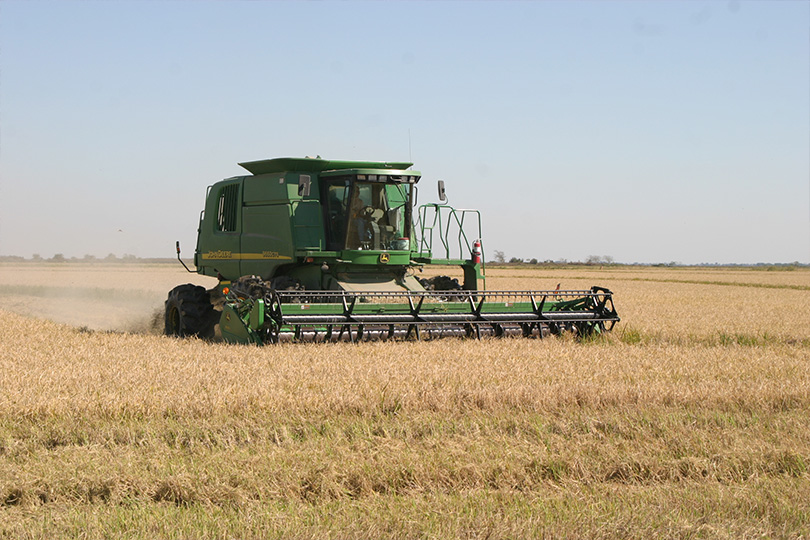By Tom Nicolette
Senior Network Producer
Hot and dry growing conditions have impacted this year’s Texas rice crop.
“The triple-digit days that we’ve had this summer do have me concerned about what kind of effects it’s had on the crop,” Wharton County rice farmer, Tim Gertson said in an interview with Texas Farm Bureau Radio Network. “We are probably between five and 10% down on yield from what we would anticipate. Rice being an irrigated crop, we usually have pretty consistent yield. So, a drop like that is definitely noticeable.”
He attributes the decrease in yield to the extreme heat.
“You get into triple-digit heat and that puts a lot of physiological stress on the plants, and they have to burn up energy just to stay alive instead of making grain,” he said.
According to the National Agricultural Statistics Service crop progress report through July 24, the statewide rice crop stood at 61% of acres in fair condition, 24% showing good and 14% in excellent shape.
As harvest moves forward, Gertson hopes yields begin to increase. For now, Gertson said he is seeing 8,000 to 8,500 pounds per acre on the first crop.
Once harvest is finished on the first crop, the region’s second crop, also known as the ratoon crop, is usually harvested in the fall. That crop grows back from the same plant after the first crop harvest.
But additional water is necessary to grow the second crop, and much of the water needed comes from the Colorado River through the Lower Colorado River Authority (LCRA).
But growers were notified on July 1 of LCRA’s decision to cut off water due to the severity of the drought.
“So, all of our acres that we would normally second crop with surface water will not be able to second crop at all this year. On my farm, I am about half and half with about 800 acres on irrigation well that will go toward producing a second crop, and 800 acres on surface water that won’t get a second crop,” he said.
Rice farmers like Gertson rely on the second crop.
“Second crop is usually where most of our profit is made,” he said. “It was disheartening to find out we would not get water, but at the same time I understand that this drought is impacting everyone, and it is definitely significant.”
Planted acreage for Texas rice was down slightly at 175,000 acres.
According to a U.S. Department of Agriculture report, Texas long-grain rice was $30-$32.25 per hundredweight for white rice and $33.50 per hundredweight for brown rice.

